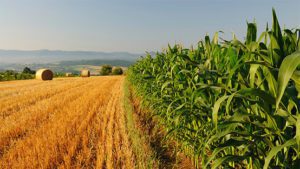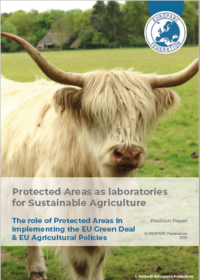Protected Areas and Sustainable Agriculture – Working in Partnership for Biodiversity and Rural Development

Agriculture © European Commission
Europe has a fragmented landscape which is under increasing pressure from competing land use demands, challenging conditions for food production, climate change and insufficient management. Despite all conservation efforts, there remains a dramatic loss of biodiversity and a degradation of ecosystems. This is neither good for biodiversity nor for farming.
Protected Areas and Farmers can be allies, working for common solutions
While agriculture and Protected Areas are often perceived to be in opposition, they are in fact playing complimentary roles: Agricultural activities play a central role in the management of EU land and the conservation of its biodiversity, as almost half the territory consists of farmland. Protected Areas and agricultural production are part of the same landscape and of a larger, more integrated rural ecosystem from which goods and services from nature can be optimized, with integrated complimentary systems.
A competitive agriculture needs a healthy environment and nature resources as they are provided by Protected Areas. Likewise, a healthy environment and nature protection need farmers’ engagement.
EUROPARC is committed to supports positive dialogue between agricultural and Protected Area communities and has identified a huge number of success stories showcasing the effective partnerships already existing in many European National, Regional and Peri-urban Parks, conciliating farming interests with biodiversity conservation, contributing to climate change actions and fostering the creation of Europe’s rural areas as living landscapes.

Read EUROPARC Position Paper
Learn more about the experiences available from the EUROPARC Network in our Knowledge Hub on Sustainable Agriculture.
Protected Areas and EU Common Agricultural Policy
In Europe, where the majority of Protected Areas consist of cultural managed landscapes, the interdependence on the ground needs to be more fully reflected in a more integrated Common Agricultural Policy (CAP).
To achieve this, EUROPARC is promoting a fundamental mind-shift on agriculture, nature conservation and biodiversity:
Towards a more holistic perspective and agriculture policies, which can be defined as: Good for People, Good for Nature
because they give a good, secure supply of food,
because they respect and protect the environment and natural resources,
because they give a fair income to the farmer.
Read here the full EUROPARC position paper and EUROPARC Recommendations positioning PAs & Natura 2000 in the current debate on the new EU Common Agricultural Policy, outlining concrete ways how Protected Areas’ potential to integrate EU agricultural interests with environmental concerns can be tapped within the new CAP and its National Strategic Plans.
CAP – Updates from Brussels & Further Readings
If you are interested to gain in-depth understanding about the CAP, you will find valuable information on the dedicated European Commission pages:
CAP at a glance: Providing a comprehensive overview about history, measures, stakeholders and current developments of the CAP. (Directorate–General for Agriculture and Rural Development)
Environment & Agriculture: Looking at the CAP from a perspective concerned with interactions between agricultural land use, rural ecosystems and the environment. (Directorate–General for Environment)
EU Biodiversity Strategy – Target 3: Achieve more sustainable agriculture and forestry : Reminding policy-makers of the need to align the CAP objectives and measures with other – especially environmental – EU policies to ensure their coherence, fostering performance of actions according to the commitments taken by member states and the Union. (Directorate–General for Environment)
Agriculture and Fisheries Council Report and press conference – status quo of the official policy making process from 19th February 201: The AGRIFISH Council, bringing together the relevant ministers from EU member states and EU Commissioners for agriculture and rural development; health and food safety; maritime affairs and fisheries, gathered in Brussels for their monthly meeting. On top of their agenda was the exchange of views on the CAP Communication “The Future of Food and Farming”, which had been adopted on 29th November 2017 by the European Commission and was first presented to the Council last December. The Communication constitutes the official starting point and framework for the policy-making process in which the 27 EU’s Institutions have to reach an agreement on the final legislation for the Common Agricultural Policy after 2020. Debates between all stakeholders involved centers around this Commission document from which the legal proposals will be developed. These proposals will, however, not be communicated to the public before May this year, when the Multi-annual Financial Framework (MFF) is planned to be officially adopted.
For PA relevant updates on the next steps in the CAP post-2020 reform, make sure you check this section and follow our News, Tweets and Facebook posts on the topic.
To get an overview of EUROPARC’s work on Sustainable Agriculture beyond policy, feel free to explore this link.